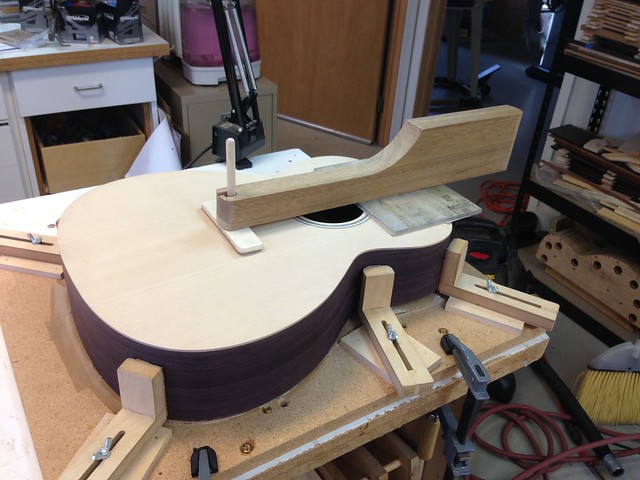jfmckenna wrote:
It's definitely good that you want to figure this out once and for all before you start building again because it's so important. I build on an open work board so it's different from building in a mold and I won't bother explaining My method because of that. But what I did was sit down and spend a couple hours figuring this out with pencil and paper and came up with a plan that works.
But ultimately what it comes down to is the proper height at the bridge. Most of luthiers aim for the string height over the soundboard at the bridge to be about a half an inch. Once you have the sound box closed and the neck made attach the neck, dry of course, and with a straight edge dead center on the fret board measure the airspace over the soundboard where the saddle is. You should have about 1/32nd of an inch of aerospace over whatever thickness bridge you choose, typically 3/8th. This measurement is taken with a fretted fretboard if you do not have the fret board fretted then just do the math.
So for a 3/8 thick bridge you would want the airspace to be about 3/8 plus 1/32nd of an inch above that. That way with the action set properly and the string tension pulling the top up a little bit you will have about 1/8 in saddle sticking above the 3/8th inch bridge and a string height of about 1/2 of an inch over the soundboard.
If you don't get it quite right then you simply adjust the heel of the neck till you get the angle correct. If you have airspace over the fret board extension then you would need to shim it. Not an ideal situation but it works. It's best to try and get that geometry of the top perfect. But really that's about it
JF - thanks for this. I seem to be getting the angle for the string height at the saddle set just fine and am doing a similar setup. There always seems to be some sanding to get the angle tweaked just right - but I get close. My problem is that I am having gaps under my fingerboard (mostly ramping up at the very end) which makes me think I am not getting the geometry set properly so that it will lay nice and flat. That is what I am trying to figure out where I am going wrong.





